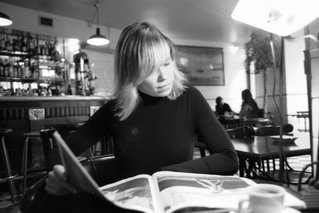Rockin’ Till the Dawn: Paris by night (and morning)
Each October, Paris’s museums, galleries, performance venues and, of course, bars, open their doors to celebrate what is known as a nuit blanche. Directly translated as ‘white night,’ this term may apply to what’s required of harried Sorbonne students on the eve of exams. More often than not, however, a nuit blanche encompasses dinner, followed by drinks, a pit stop at someone’s flat (where there is undoubtedly a fête in the works), more drinks, some dancing and – depending on your social circle – a final shift in a bar that caters to those who don’t believe in last call, or one more whirl around the dance floor in what North Americans would refer to as a booze can, and what Parisians authoritatively dub an after (French accent mandatory).
Needless to say, a nuit blanche of the latter variety rarely produces any white knights. Nor do Parisian fêtards (party animals) wait for a city-sponsored event to engage in all-night debauchery. As spring attempts to upstage winter’s swan song, signs of the nuit blanche are everywhere – and even more so than usual, since France’s smoking ban has forced inebriated revelers to take their cancerous habits outdoors.
And so, it’s not uncommon for a Saturday morning jogger to be approached by a handsome – albeit disheveled – young man, whose red-rimmed eyes are having difficulty focusing on the directions to the neighborhood’s most popular after. Nor is it particularly surprising when the same jogger is stopped not five minutes later, in front of the famed brasserie Au Pied de Cochon at the foot of Les Halles, by a pack of raucous Frenchmen eager to share their champagne. Despite the chilly weather, it’s April in Paris, and while no one ever really abandoned it, the practice of the nuit blanche is in full force.
For those who have partaken in this ritual, it must be said that it’s not without its romance: watching one of the world’s most beautiful cities come to life while (staggering) strolling down the Canal St-Martin, along the Seine or through the winding passageways made famous by yesterday’s artists, musicians and writers holds a modest decadence that can’t help but make one feel like a bit of a bon vivant. Jacques Dutronc recognized this, and paid tribute to the Parisian-style all-nighter in his celebrated hit ‘Paris s’éveille’ (‘Paris Wakes Up’). In it, two sleepy worlds collide: the office workers on their way to their jobs; and the cabaret dancers, revelers and ladies (and men) of the evening, boasting smeared make-up and (in the last case) five o’clock (in the morning) shadows, on their way home. Every now and then, as the birds launch into their serenades and the garbage trucks start rumbling through the streets, you may hear a slurred interpretation of this contemporary masterpiece, delivered by someone who’s living – and facing – the music.
Presumably, right before they head back to their flat to conduct a clumsy search of the fêtard’s most powerful weapon: that all-important aspirine.
Needless to say, a nuit blanche of the latter variety rarely produces any white knights. Nor do Parisian fêtards (party animals) wait for a city-sponsored event to engage in all-night debauchery. As spring attempts to upstage winter’s swan song, signs of the nuit blanche are everywhere – and even more so than usual, since France’s smoking ban has forced inebriated revelers to take their cancerous habits outdoors.
And so, it’s not uncommon for a Saturday morning jogger to be approached by a handsome – albeit disheveled – young man, whose red-rimmed eyes are having difficulty focusing on the directions to the neighborhood’s most popular after. Nor is it particularly surprising when the same jogger is stopped not five minutes later, in front of the famed brasserie Au Pied de Cochon at the foot of Les Halles, by a pack of raucous Frenchmen eager to share their champagne. Despite the chilly weather, it’s April in Paris, and while no one ever really abandoned it, the practice of the nuit blanche is in full force.
For those who have partaken in this ritual, it must be said that it’s not without its romance: watching one of the world’s most beautiful cities come to life while (staggering) strolling down the Canal St-Martin, along the Seine or through the winding passageways made famous by yesterday’s artists, musicians and writers holds a modest decadence that can’t help but make one feel like a bit of a bon vivant. Jacques Dutronc recognized this, and paid tribute to the Parisian-style all-nighter in his celebrated hit ‘Paris s’éveille’ (‘Paris Wakes Up’). In it, two sleepy worlds collide: the office workers on their way to their jobs; and the cabaret dancers, revelers and ladies (and men) of the evening, boasting smeared make-up and (in the last case) five o’clock (in the morning) shadows, on their way home. Every now and then, as the birds launch into their serenades and the garbage trucks start rumbling through the streets, you may hear a slurred interpretation of this contemporary masterpiece, delivered by someone who’s living – and facing – the music.
Presumably, right before they head back to their flat to conduct a clumsy search of the fêtard’s most powerful weapon: that all-important aspirine.


<< Home